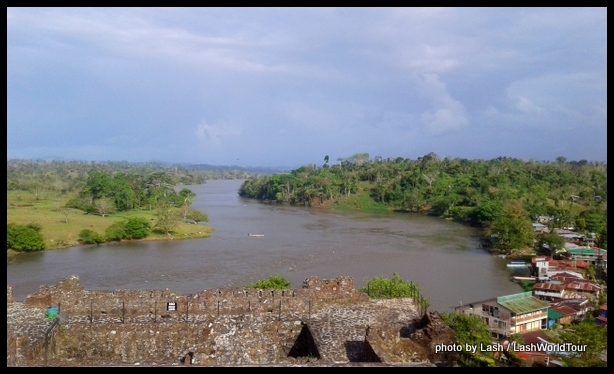
Remote Rio San Juan from El Castillo
Visiting Nicaragua’s far Southeast Corner
Not many travelers explore Nicaragua’s remote southeastern corner where the Rio San Juan meanders its way through dense jungles from massive Lake Nicaragua all the way to the Caribbean Sea, and where the vast tropical nature reserves Punta Gorda and Indio Maiz are situated. This is also where the remote Solentiname Archipelago rests within the farthest reaches of Lake Nicaragua.
The primary reason that few people get there is its remote location and, thus, the long distances and time required to access the region.
However, nowadays it’s actually fairly easy to reach the area, and certainly not nearly as time-consuming as it used to be. Direct buses from Managua take as little as five hours to reach tiny San Carlos, the main town and jumping off point for the region’s many adventures.
Roads are in excellent condition and boats to both the islands and river destinations run daily. There are also flights from Managua to San Carlos.
From Costa Rica, it’s equally easy to access the area. From San Jose, daily direct buses run to the border at Los Chiles, taking five hours. The border crossing on both sides is fast and easy. Then it’s just a 40-50 minute van ride to San Carlos.
I wrote all about making this border crossing here.
Travelers visiting from Nicaragua could opt to cross the border into Costa Rica there after their San Carlos area adventures, instead of returning back to central Nicaragua.
And as I hinted at above, the chances for remote, off the beaten path adventures are well worth the trip for anyone who loves nature, jungle adventures, birds, and off track adventures.
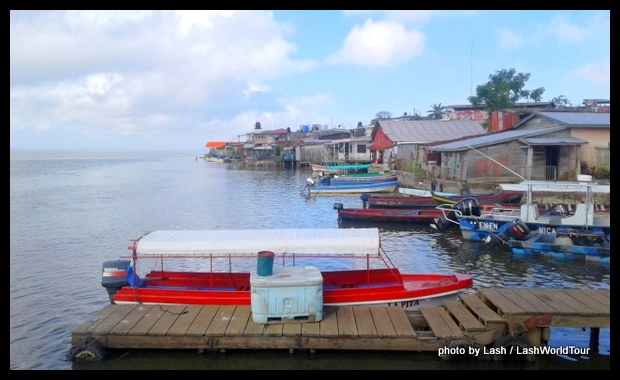
San Carlos – Nicaragua
San Carlos
San Carlos is a typical, rather grubby frontier / transportation / market town that has a superb location on the shores of massive Lake Nicaragua and the mouths of two undeveloped jungle rivers.
Small Rio Frio flows from the Costa Rican hinterlands into the lake right there. And the mouth of the much larger jungle-clad Rio San Juan flows out of Lake Nicaragua to begin its winding route all the way out to the Caribbean Sea.
As a result, San Carlos is surrounded on three sides by water. Although primarily a cluttered, messy town, it does have some worthy attractions.
Most noteworthy is its lovely, spacious lakeside park with two covered boat piers, two large pavilions with food & drink, a grassy lawn and fantastic views over the lake, nearby Solentiname Islands and the two rivers.
Beautiful sunsets unfold there every evening. Water birds are plentiful. And lots of interesting local characters can be seen milling about.
The lower end of town beside the lake is full of charming colonial architecture that consists of colorful wooden plank buildings lining flagstone cobbled roads.
The sprawling produce market and small shops offer really good prices. And, surprisingly, there’s an excellent bakery too! If you’re heading to Costa Rica, stock up on whatever you need because in Costa Rica prices for nearly everything are much higher.
So San Carlos itself is an interesting destination for a couple days. It’s also the jumping off point for boats to the Solentiname Islands, set in the lake, and for boats down the Rio San Juan to El Castillo and San Juan del Nicaragua at the Caribbean Coast.
There’s even a tourist information office in San Carlos with boat schedules and other info. It’s located in a pavilion at the waterside park.
Motorized open-air wood boats depart several times daily for river destinations and once daily for the islands.
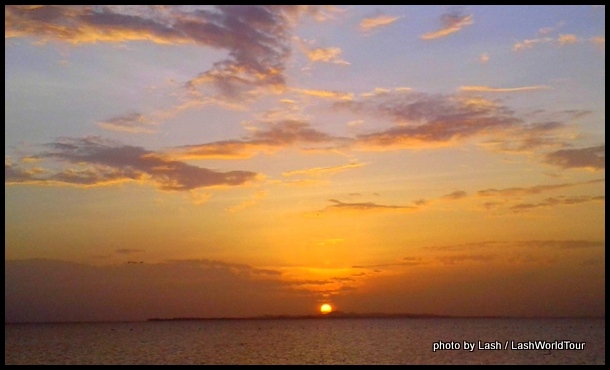
Solatiname Islands during sunset over Lake Nicaragua at San Carlos
Solentiname Islands
Solentaname Islands are a collection of 36 small islands, 4 of which are inhabited, 2 of which have accommodations for travelers. They’re pretty primitive – no roads or cars, no electricity, no Wifi or phone service. Just the peace and quiet of nature.
The islands are most famous for the native artists who carve small wood figurines of the local tropical birds and animals, which the artists paint in vibrant colors.
Besides checking out the local art, visitors can observe daily local life, kayak on the lake and relax surrounded by nature.
For budget travelers, note that it’s a bit expensive to visit the islands. The lowest prices for dorm beds are $15 US per night. Not many restaurants exist, so you pretty much have to eat at the hostels, with set meal prices that would total $13-18 US per day for three meals.
Then there’s the cost of taking boats to/from the islands. It’s $10 each way for the daily fast boats. If you time things right, you can take the twice weekly local boats for $3 each way, which would certainly lower prices.
Still, it will cost a minimal of $30 US per day just to get there and back, eat and sleep. If you want to kayak or join any tours, obviously it will cost more.
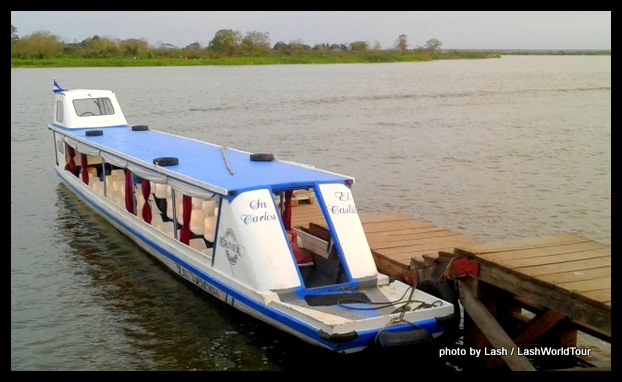
boat ferry to El Castillo on Rio San Juan
Rio San Juan
On Rio San Juan, several daily boats ferry people up and down the river. Most passengers are locals heading back to their villages or returning to San Carlos. But travelers also are welcome on these quaint but comfortable boats.
The main destinations are El Castillo, a small riverside village with a historically important Spanish stone fortress sitting on the hillside over town, and San Juan del Nicaragua at the Caribbean Coast.
Boat trips on the river are quiet, relaxing and comfortable. Amazingly, the boat engines are extremely quiet, emitting just a soft purr. The only other sound (besides fellow passengers) is the gentle sloshing of water against the boat.
It’s two hours to El Castillo, five hours by fast boat to San Juan del Nicaragua or a whopping 12 hours by slow boat.
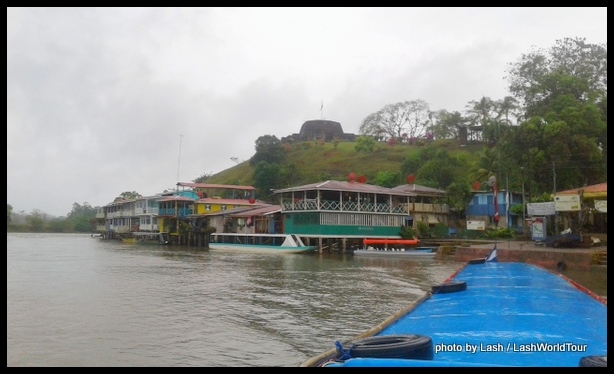
El Castillo with Spanish fort on the hill
El Castillo
El Castillo is a charming riverside town with a very important history. In the 1600s pirates used to sail up the San Juan River from the Caribbean to access Lake Nicaragua. They could sail across the lake to Granada, the most important city in the region.
In fact, pirates completely destroyed Granada three times!
The Spanish eventually built a stone fortress on top of the hill at the location of El Castillo, where the river takes a wide bend and a section of rapids makes the river much harder to navigate.
From the hilltop there are clear, distant views up and down the river in both directions. And the rapids, coincidentally situated at the same point, slow down any boats heading upstream to the lake.
Today the remains of the renovated fortress has been converted into a museum, complete with a room full of educational displays and historic objects. A museum guide is also happy to explain everything to visitors who prefer listening to reading.
Panoramic views from atop the fortress are stunning. And the top room of the fort has been converted into a pubic library, which draws in local youth to read and hang out.
El Castillo town has many small, family run hotels, hostels and restaurants. Most of them are right beside the river with open-air verandas and dining areas. A few tour companies offer various tours in the area.
All in all, El Castillo is a relaxing, charming, interesting and beautiful destination.
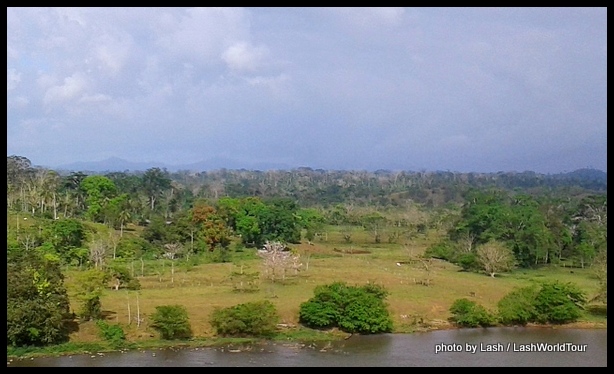
beautiful tropical jungle lining Rio San Juan
San Juan del Nicaragua and Nature Reserves
San Juan del Nicaragua is a small town situated on the Caribean Sea at the mouth of San Juan River. This is the access point for the huge, little-developed tropical nature reserves Punta Gorda and Indio Maiz.
I did not make the trip down to San Juan del Nicaragua, so I can’t give any firsthand information about the area. But it’s easy to research either online or in various guidebooks.
Summary
The San Carlos area offers many interesting travel options for people who like nature and more off the track destinations. Depending on how much time and money you have, you could visit one, two or all these great spots in southeast Nicaragua.
From there you can cross the border into Costa Rica or head up into central Nicaragua.
You might also enjoy the following articles
Costa Rica’s Stunning Pacific Coast Beaches
===========================================================









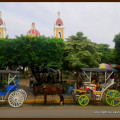
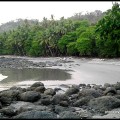

 Hi! I'm Lash, an American nomadic world traveler who's been traveling solo since 1998. I’m passionate about traveling the world nomadically and then sharing it all with you. I hope to inspire you to travel the world, to entertain you with tales from the road, and to help you reach your travel dreams. Welcome!
Hi! I'm Lash, an American nomadic world traveler who's been traveling solo since 1998. I’m passionate about traveling the world nomadically and then sharing it all with you. I hope to inspire you to travel the world, to entertain you with tales from the road, and to help you reach your travel dreams. Welcome! 



